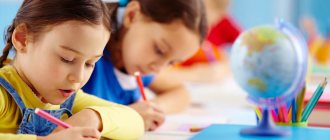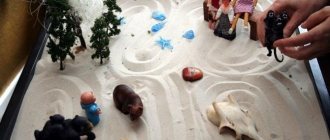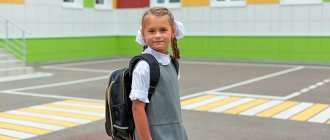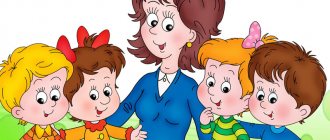Photo source: https://www.shutterstock.com/
Preparing a child for school is not the only task that needs to be addressed in preschool age. It is important to lay the foundations of education and correctly direct the vector of personality formation. After all, a child’s future achievements or his problems with others and himself begin at a very early stage in his life.
From the material you will learn how a child is prepared at school, what problems can be encountered in the process of preschool education, and how the psychological characteristics of a child affect his learning. We will present age-appropriate methods of education and socialization.
Content
- How to prepare your child for school?
- Features of the development of a preschool child
- Features of the education of preschool children
- Basic preschool education programs for children
- Modern problems of preschool education
- Additional preschool education as a guarantee of the harmonious development of a child
- The role of dynamic toys in the development of a preschool child
- Play as a context of development in preschool age
- Structure and options for story-based play for preschoolers
- Computer games in the life of a preschooler
- Let's draw a conclusion or instead of a conclusion
Formation of readiness for schooling
A child’s psychological readiness for the school process is one of the most important outcomes of preschool development. When a child begins attending school, the life of a child changes significantly: the routine changes, the level of mental stress increases, conditions arise that require the ability to exercise volitional efforts and self-control. The success of adaptation to new conditions is largely determined by the child’s readiness for such changes.
Positive answers to the following questions may indicate that a child is ready to become a schoolchild:
- Does he want to gain new knowledge?
- Is he interested in communicating with new children?
- Is he in a good mood playing the role of a schoolboy?
Preschool education of children involves creating a positive attitude in the child towards the role of a student, because everything begins with the desire to learn.
Successfully preparing a child for school means:
- instill in him a positive attitude towards educational and social activities;
- make him realize the importance and necessity of schooling;
- arouse his interest and desire to become a schoolchild;
- develop a desire to learn to read.
A good motivator for a child will be the example of older sisters, brothers or friends who are already in school. Also, games at school with changing roles “student”, “teacher”, reading and discussing books, contacts with other children and peers, and teaching independence will help overcome difficulties in preparing a child for school.
How to prepare your child for school?
The development of a child in the process of preschool education is monitored not only by specialists, but also by parents. They are the ones who care most about how to properly prepare their child for school. There are a number of criteria by which one can judge the degree of preparation of a child for the beginning of the educational process.
- Reading. Many children develop differently, so not everyone can master reading skills. Therefore, in order for your child not to seem like a black sheep, you need to make every effort to develop fluent reading not only of syllables, but also of words.
- Letter. It is desirable that the child can write or simply rewrite a word or simple phrase in letters.
- Check. A significant bonus at school will be the child’s ability to consciously count to ten.
- Seasons. Knowing the seasons and days of the week is another indicator of a child’s readiness for school.
- Independence. Of course, this concept is flexible. However, on the threshold of September 1, the child must be able to get dressed, put on shoes, put his things in their places, and clean up after himself. Such skills will be of great use to him at school.
- Colors and shapes. It would be great if your child could distinguish colors and simple geometric shapes.
In achieving such goals, it is possible to use the possibilities of additional preschool education for children. Attending sections and clubs will help your child socialize faster and understand that he will have to live in society. Thus, he will be ready for school not only mentally, but also morally.
Features of the development of a preschool child
The education of preschool children is a very important process in which priorities must be set correctly. To do this, it is necessary to know and understand the developmental features of a preschool child.
- Preschoolers experience a transition from visually effective to visually figurative thinking. Such thinking is based on perception, cognition and sensations.
- Preschool children's analysis skills are elementary, but generalization has not very significant features. As thinking develops, the child’s speech develops.
- Grammatically correct oral speech is formed in the process of communication with adults. By the age of 7, the child already speaks well and expresses his thoughts.
- An older preschooler can maintain attention on a certain type of activity for 15-20 minutes. At the same time, he can independently control it, and also direct it at all kinds of objects.
- Preschoolers can remember the necessary information not only mechanically, but also meaningfully. They turn to simple memorization only if it is difficult for them to understand the material.
- The imagination of a child of this age is reproductive - that is, he reproduces everything that he saw during the day in vivid images.
Educational programs for preschool education of children are built on these features. This is necessary to know when forming the personality of a child of this age.
Photo source: https://www.shutterstock.com/
Social development of a preschooler
The upbringing of preschoolers must take into account that the child’s social circle at this age expands significantly. He learns to interact with peers by playing on the playground and attending preschool.
He may have to face the first misunderstandings and the need to defend his opinion. Since the child is just learning, an adult must show him what behavior can be in certain situations. This is best done in games. Children, as a rule, are happy to engage in role-playing games with a given adult plot.
In the process of communication, the child acquires social experience, which is provided by the people around him: peers, kindergarten teachers and parents. The child actively communicates and exchanges information, as a result of which so-called social competence is achieved
Social adaptation occupies an important place in the process of raising preschool children. In society, children learn to live by certain rules and take into account certain norms of behavior. Socially maladjusted children will find it very difficult to make contact with adults or their peers, and this can lead to antisocial behavior in the future. Failure to master cultural skills and necessary social qualities makes it difficult for children to adapt in the lower grades, and most often leads to school maladjustment.
Features of the education of preschool children
The development of a child in the process of preschool education directly depends on awareness of the characteristics of the educational process. Failure to comply with requirements and incorrect actions can only cause harm to a preschooler. It is worth considering education in three aspects: social, pedagogical and psychological.
- Social. In preschool age, the worldview of a little person is actively formed. He is already getting acquainted with what is good and what is bad, the first guidelines are being built in his mind. He will turn to them not only in his actions, but also in the process of choosing a future profession.
- Pedagogical. At preschool age, the child’s knowledge, skills and abilities are actively formed. He learns the most effective ways of learning activities and develops an environment of his interests. The first bricks of the foundation for lifelong education are being laid.
- Psychological. Preschool age is an important stage in the development of a child’s personality. Visual-figurative thinking is formed: the preschooler learns to analyze incoming information. Through the gradual development of abilities, creativity is formed as an integral element of activity.
The main preschool education programs for children are based precisely on these features. It is also important for parents to know them in order to properly raise their child together with specialists.
Basic preschool education programs for children
When sending their child to kindergarten, parents think: how will my son or daughter be taught? You need to know that the Ministry of Education has developed basic programs for preschool education for children.
Each of the programs should contribute to a correct and holistic pedagogical process, during which the child will develop as much as possible. At the same time, all educational programs for preschool education of children can be divided into comprehensive and partial.
- Complex programs are also called general developmental programs. They include all activities for the development of the child, as well as a combination of all types of activities. These include the programs “Rainbow”, “Krokha”, “Origins”, “Childhood”, “From Childhood to Adolescence” and many others.
- Partial programs are those that imply a narrow specialization. At the same time, education can be carried out effectively not only through the choice of one program, but also with the correct selection of partial programs. These include programs for physical development, environmental education, and the development of social skills.
Most programs are developed by prominent scientists or large teaching teams who know first-hand about the developmental characteristics of preschoolers.
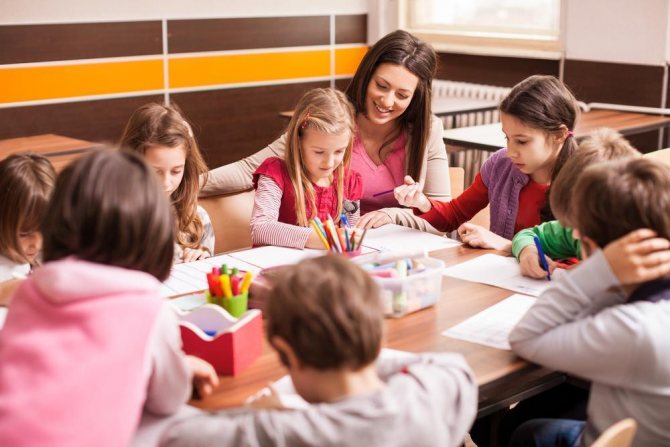
Photo source: https://www.shutterstock.com/
Training and education of preschool children
Svetlana Barysheva
Training and education of preschool children
The method of teaching preschoolers is the ways and means by which the teacher imparts knowledge to children and develops skills and abilities.
teaching proposed by Academician Yu. K. Babansky, which identifies three large groups of methods, has become widespread in didactics in recent years
1. Visual methods and techniques - their use corresponds to the didactic principle of clarity and is associated with the characteristics of children's thinking.
Observation is a child’s purposeful, systematic perception of objects and phenomena of the surrounding world, in which perception , thinking and speech actively interact. Using this method, the teacher directs the child’s perception to highlight the main, essential features in objects and phenomena, to establish cause-and-effect relationships and dependencies between objects and phenomena.
Different types of observations are used in teaching
I) recognizing nature, with the help of which knowledge is formed about the properties and qualities of objects and phenomena (shape, color, size, etc.)
;
2) for the change and transformation of objects (growth and development of plants and animals, etc.)
- provides knowledge about processes and objects of the surrounding world;
3) reproductive nature, when the state of an object is established based on individual characteristics, and the picture of the entire phenomenon is determined in part.
The demonstration method includes various techniques:
A) Showing objects is one of the most common teaching : children look at doll furniture and clothes, dishes, household items, tools, equipment for drawing, modeling, appliqué, etc.;
B) Showing a sample is one of the techniques used when teaching visual arts and design. The sample can be a drawing, applique, or craft;
C) Demonstration of a method of action - used in classes on the development of movements, music, artistic activities, etc., it must be accurate, expressive, divided into parts; may be complete or partial;
D) Demonstration of paintings and illustrations helps children imagine those aspects and properties of the objects and phenomena being studied that they cannot directly perceive .
The use of TSO - in teaching preschoolers, demonstrations of transparencies, filmstrips, and films are used. Recently, computers have been used. This method allows you to show children those phenomena of life with which direct acquaintance is impossible; makes the learning process more attractive.
2. Verbal methods and techniques - their effectiveness largely depends on the teacher’s , on its imagery, emotional expressiveness, and accessibility for children’s understanding.
Explanation is used in the process of observing phenomena and examining objects, paintings, during exercises, etc.; with its help, children's immediate perceptions ; should be expressive, emotional, accessible to children. A story is a lively, imaginative, emotional presentation of events containing factual material. One of the most emotional learning . The narrator has the opportunity to freely communicate with children, notice and take into account their reactions.
teacher's story : should be an example of literary correct, figurative and expressive speech.
A children's story can be a retelling of fairy tales, literary works, stories based on paintings, objects, from childhood experience, creative stories.
Reading expands and enriches children’s knowledge about the environment, shapes children’s abilities to perceive and understand fiction.
3. Practical teaching are used to understand reality, develop skills and abilities, deepen knowledge. During their application, the following techniques are used: planning the task, setting the task, operational stimulation, control and regulation, analysis of results, identifying the causes of shortcomings. Practical teaching cannot be used without other, in particular visual and verbal, teaching .
Practical teaching methods are as follows : exercise method, laboratory work method, practical work method, game method.
The form of organization of training is a joint activity of the teacher and students , which is carried out in a certain order and established mode.
Traditionally, the following forms of training :
Forms of training organization Features
Individual Allows you to individualize learning (content, methods, means, but requires a lot of nervous effort from the child; creates emotional discomfort; uneconomical learning ; restricts cooperation with other children.
Group
(individual-collective)
The group is divided into subgroups.
Reasons for recruitment: personal sympathy, common interests, but not according to levels of development. At the same time, it is, first of all, important for the teacher to ensure the interaction of children in the learning .
Frontal
Work with the whole group, clear schedule, uniform content. At the same time, the content of training in frontal classes can be activities of an artistic nature.
The advantages of the form are a clear organizational structure, simple management, the ability for children to interact, and cost-effectiveness of training ; The disadvantage is the difficulty in individualizing training .
education method is a way of influencing the consciousness, will, feelings, and behavior of students in order to develop certain qualities in them. The method can also be defined as a way of managing activities, during which the self-realization of the individual, his social and physical development is carried out.
The method of education is part of the general method, a separate action.
A means of education is no longer a technique , but also not a method. For example, work is a means of education , but showing, evaluating work, pointing out an error in work are the methods by which the use of this means is organized for educational .
The means of education include the speech of the teacher, as well as various activities: work, play, study. A special means of education is communicative activity (communication, since during communication there is not only an exchange of information, but also the mutual influence of the participants in communication on each other. The means also include various objects used as substantive support for the educational process (posters, illustrations, reproductions, musical and artistic compositions, elements of aesthetic design of the environment, etc.).
Since any method of education in practice is carried out using certain means and techniques, the method in its practical implementation can be defined as a system of techniques and means. At the same time, in the structure of each method, various combinations of means and techniques are possible, which makes it possible to take into account the specific situation of application of the method.
Currently, the most common classification of educational is by their focus (G. I. Shchukina, Yu. K. Babansky)
.
The focus of the method is a complex characteristic, including the goal (why it is used, content (what is formed, the process (how exactly the influence occurs, ways of influencing the student education methods are distinguished :
1) methods of forming the consciousness of the individual;
2) methods of organizing activities and forming experience of social behavior;
3) methods of stimulating behavior and activity.
The first group - methods of forming the social consciousness of children, serves to accumulate social experience by children, which is acquired through socialization: pedagogical requirement, exercise, assignment, example, situation of free choice (models a moment in real life)
.
The second group is methods for children to comprehend their social experience, motivation for activity and behavior. A common feature of this group of methods is their verbal nature: story, conversation, lecture, discussion (debate)
.
The child becomes a subject of activity, communication, life creativity, the ability to reflect is formed: knowledge about himself, his appearance and character, abilities and shortcomings, the limits of his capabilities. This group includes methods of self-knowledge (What I know about myself, methods of self-change (What I want to be), methods of mutual understanding (What others think of me)
.
The third group is methods of stimulating and correcting the actions and relationships of children in the educational process . In the process of accumulating social experience and self-determination of his personality, the child needs pedagogical support from the teacher and parents . These methods of education will help children, together with adults, find new reserves for their activities, change their behavior, believe in their strengths and capabilities, and realize the value of their personality. Such methods are: competition, encouragement, punishment, creating a situation of success.
In organizing the pedagogical process in kindergarten, the question of the uniqueness of educational work with preschool children is of great importance .
A significant number of forms and means of educational work with preschool , including classes, didactic games, and didactic materials. Each of these means has different capabilities in relation to educational tasks .
Soviet preschool pedagogy selectively approaches the means of educational work with children, in accordance with the tasks of the Soviet kindergarten, based on the requirement of active management of the development of each child, ensuring a high level of comprehensive development of all children raised in kindergarten .
Among the means of preschool educational work, training has great advantages, since it provides an organized teaching role for an adult , which makes training very effective .
Learning , when applied to various educational contents - familiarization with the environment, the formation of speech, the development of mathematical concepts, musical abilities, the development of movements, drawing, modeling, etc., has a deep educational impact : develops abilities, interests; broadens one's horizons, enriches skills in various activities, and improves attention. Training makes it possible to raise the development of all children in a group to a higher level and helps to significantly mitigate the uneven development of children observed in practice.
The group of tools “Textbooks and teaching aids” covers both literature for educators and literature for children, which contains everything necessary for organizing the learning and developing children’s abilities.
Visual aids are based on the use of visual teaching created by man, and combine natural and volumetric aids, as well as figurative and symbolic aids.
Natural visual aids are natural objects, genuine objects, specially processed for the purpose of using them in the educational process. These include, for example, herbariums, preparations, collections, stuffed animals, etc.
Three-dimensional visual aids are those that convey the objects being studied not in their natural form, but in the form of a three-dimensional image, being a three-dimensional image of the object. Three-dimensional visual aids include: models, mock-ups, dummies, etc.
Figurative-sign aids are those aids in which the objects being studied are conveyed in the form of figurative two-dimensional images using various signs or sign systems. This group includes: paintings, drawings, portraits, applications, photographs, slides, films, etc.
The means of carrying out practical actions include instruments and devices for experiments, laboratory equipment, equipment for work, offices, gyms, etc. The main purpose of this group of means is to promote the formation of skills of a practical nature. Moreover, among them there can be both means specially created for the learning , and any means of the surrounding reality that are not created specifically for the educational process, but are used in it for the specified purpose. The formation of experience in carrying out activities, as an integral part of the content of education, largely depends on the diversity of this group of teaching .
Technical teaching allow you to implement one or more didactic functions using special technical devices.
Despite the wide range of applications and variety of functions that teaching , they cannot replace a teacher. He will always be the central figure of the pedagogical process. Learning tools , but expand its capabilities. They are one of the teaching , a pedagogical tool in the hands of the teacher, which he must be able to use, based on the basic principles underlying their use.
Modern problems of preschool education
The education of preschool children is not without problems. Despite the fact that not only parents, but also specialists are responsible for the formation of a child’s personality, the domestic preschool education system has a number of problems.
- Group occupancy. Everyone knows how difficult it is to register for kindergarten on time. As a rule, in preschool institutions many groups are simply overcrowded. Thus, kindergarten teachers are forced to devote little time to each child. It is known that a child who is not given full pedagogical attention is doomed to problems at school.
- Teaching staff. Despite its apparent simplicity, working in a kindergarten is very complex. A specialist must know not only educational methods, but also understand a large number of related areas. Overload at work, checks, low wages, stress - all this reduces the attractiveness of the profession, and also gives rise to ordinary apathy towards one’s work.
- Non-compliance with standards. The state allocates little money to maintain preschool education standards. Every teacher experiences problems acquiring didactic literature necessary for working with preschoolers.
The development of education for preschool children directly depends on how these problems are solved. At the same time, a lot depends not only on the leadership, but also on the parents themselves - after all, only in a caring society can a child develop and learn correctly.
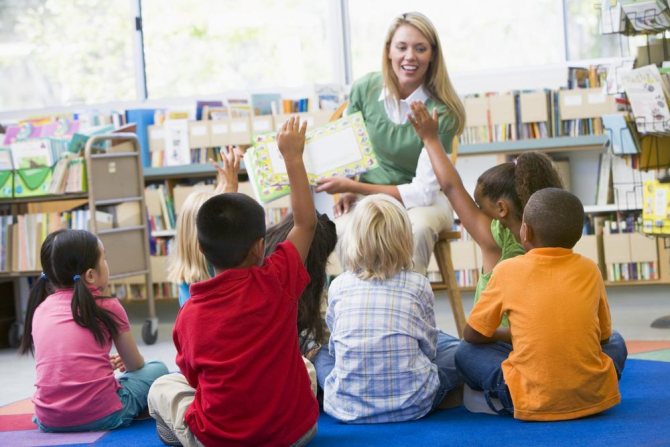
Photo source: https://www.shutterstock.com/
What's wrong with our kindergartens?
Alas, so far our domestic system is based only on the authority of elders and instilling discipline, obedience, and a “comfortable” character in children. With the education of individuality, and even more so, the development in them of some qualities necessary in life, in junior preschool institutions, no progress has yet been observed.
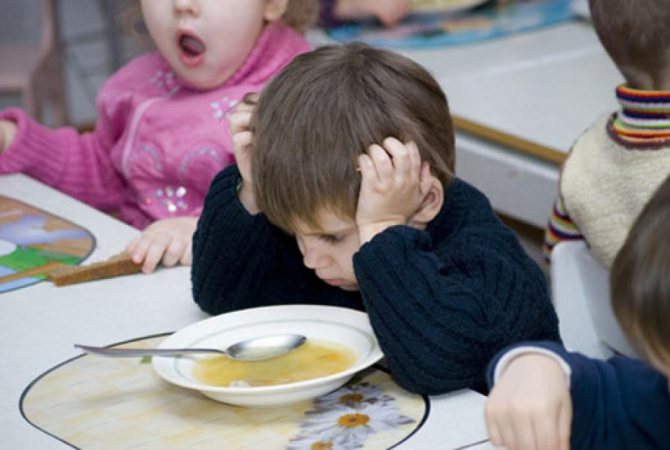
The entire educational process mainly revolves around filling out methodical plans and training children for matinees for parents. The rest of the time, the children are essentially left to their own devices, but under the supervision of a teacher who either talks with colleagues, or is buried in her phone, or is writing another report that no one needs.
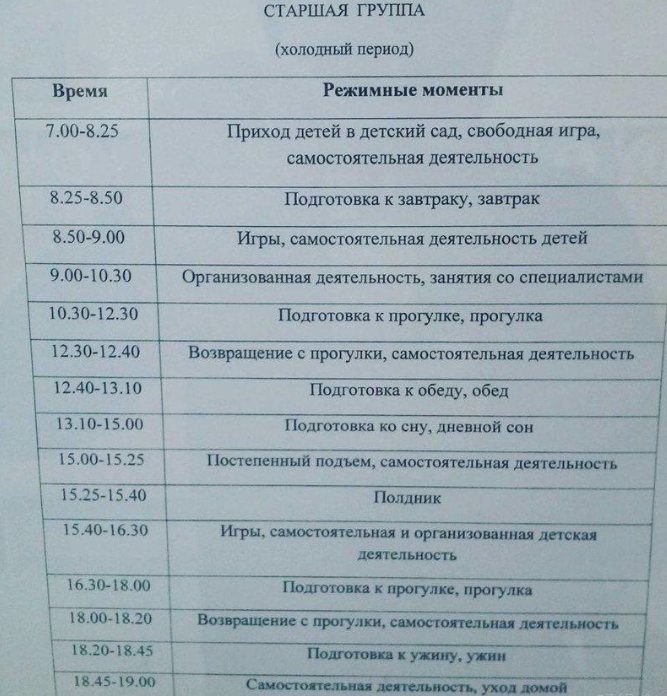
In addition to “independent activities,” children also walk, eat and sleep independently
And until parents are seriously concerned about the future of their children and changes in this area, the vast majority of kindergartens, alas, will remain breeding grounds for runny noses, tasteless semolina porridge and forced afternoon naps.
Where from a child who is brilliant and talented from birth (and they are all like that), they grow up to be uninitiative schoolchildren, and then boring and passive adults.
Therefore, the issue of choosing a kindergarten for a child needs to be approached especially responsibly; after all, parents should try harder and find a progressive preschool institution. Or unite and try to change something together as a kindergarten team. leave a comment
Additional preschool education as a guarantee of the harmonious development of a child
It's no secret that an ordinary kindergarten is not capable of fully shaping the future student. Therefore, today many parents are thinking about the issue of additional preschool education for their children. They are doing the right thing because this type of activity has a number of advantages.
- The child can fully develop his talents, while the choice of activities will be made freely.
- In preschool institutions of additional education, you can choose the mode and pace of mastering programs, as well as build planning and educational trajectories.
- A child can take part in various developmental programs in accordance with his interests, values and inclinations.
- It is in additional education that a close connection with reality and practice is realized.
- Parents and their child can choose a coach and teacher based on information about his qualifications and area of activity.
Additional education for preschool children is a kind of “social elevator” for the majority of children, who cannot obtain the full range of knowledge in full due to various reasons. Participation in clubs and sections will allow the child to compensate for this deficiency and develop his abilities to the maximum.
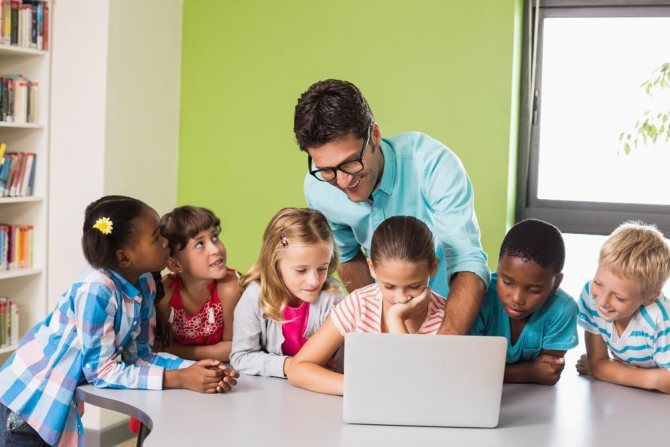
Photo source: https://www.shutterstock.com/
Three techniques that raise successful people
Three main educational systems are well known: Waldorf, Montessori and Reggio Emilia. Let's take a closer look at them.
The Waldorf system is the most popular of the alternatives. It focuses on developing creative skills in children, so they spend almost all their time doing various crafts and creative activities; Early development in humanitarian and technical subjects is not encouraged here.
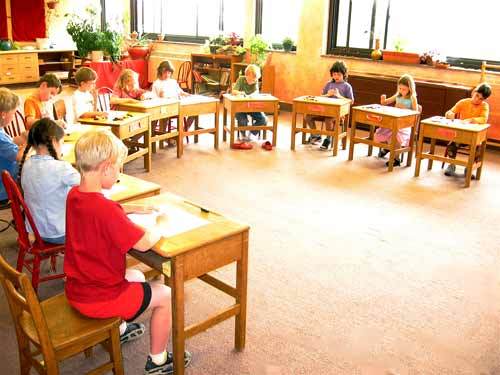
Thus, if it is clear that the child will study letters and numbers at school anyway, but no one will let him draw from the heart so that the “spark” of creativity does not go out, it is cultivated in a preschool institution that works according to this system. Abroad there are almost 40%.
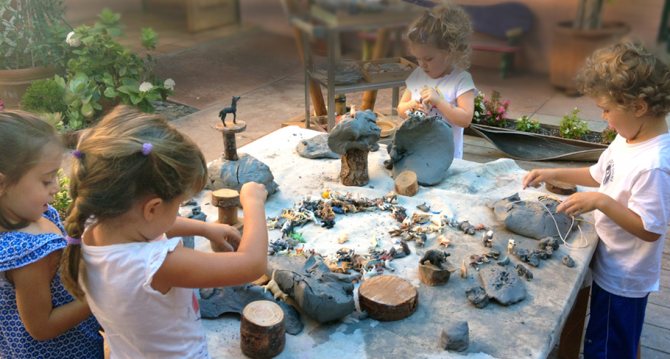
The Montessori system - here the child is given the freedom to choose his own activity, but there is also an emphasis on creative work. He chooses his hobby himself from what he likes most; later he can easily change his hobby by reaching an agreement with his peers.

As is already clear, the emphasis is on developing independence and communication skills, control over one’s desires and likes. Montessori also takes into account the periods in childhood when a child is most likely to develop certain skills - and use these periods wisely.
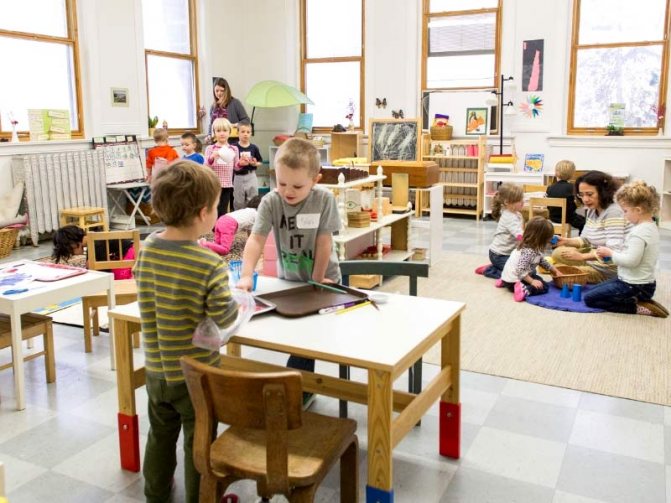
Almost a third of foreign kindergartens and about 5% of ours operate under this system. These are either private kindergartens or where truly passionate people work. At the same time, higher authorities have little support for this - there is a lot of hassle.
The Reggio Emilia system successfully works on a project approach, when the child becomes the author of his own projects and research, and adults become assistants and “collaborators”. With the help of this system, children develop planning skills, breaking down a large problem into smaller ones, the ability to solve them and look for different approaches to one thing.

This system appeared not so long ago, but its graduates show unique results in entrepreneurship, the ability to organize and manage people.
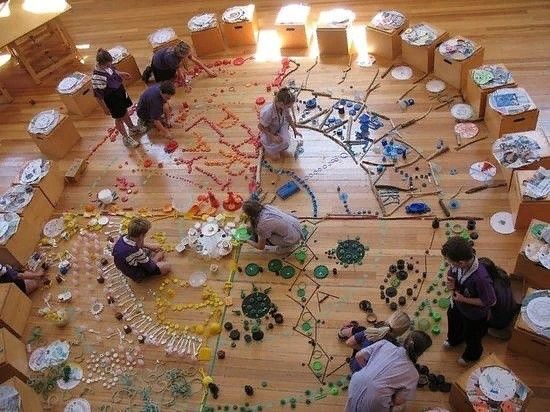
Thus, the Waldorf system develops future creators, Montessori creates managers, and Reggio Emilia is perfect for children with an entrepreneurial spirit.
The role of dynamic toys in the development of a preschool child
A child learns about the world with the help of toys. Therefore, the child’s development in preschool education depends on their correct choice and understanding of the characteristics.
- Rocking toys. This is the familiar tumbler toy. Her resilience can simply delight a child. Imagine: he barely touches the toy and it swings over a small amplitude. The more effort, the closer the toy is to falling. The preschooler is interested in a fun game and develops with its help. A seemingly simple tumbler - it promotes maximum concentration of the child’s attention, develops his motor skills, and also improves the perception of shapes.
- Walking toys. This is practically a living embodiment of an animal that can be used during the production of fairy tales and performances. So, using the toy, the baby will develop his speech, train his memory, and also develop imaginative thinking. In addition, a sense of rhythm will develop: for example, a chicken stomps evenly and loudly, and the child repeats the movement after her.
- Kugelbahn - gurney. Such toys maximally develop the child’s understanding of the arrangement of objects. They help develop dexterity.
Basic preschool education programs for children contain elements of the use of toys. It is important not only for specialists, but also for parents to know how one or another type of object can influence the development of a child.
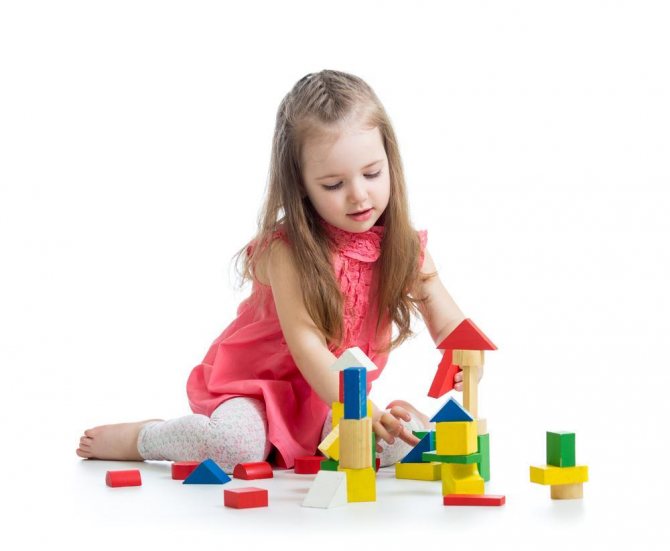
Photo source: https://www.shutterstock.com/
All children are born geniuses. But only until kindergarten
Almost from birth, children have an amazing imagination - they love to play, they tend to invent imaginary friends for themselves, they are often fond of creativity, and come up with various interesting ideas at every step.
But after entering domestic kindergartens, the “system” most often negatively affects this flow of fantasy - and the child is no longer so interested in his own inventions, but only in communication with peers, rather primitive (or even dangerous) games with them, and pampering. And all because of the insufficient amount of attention from indifferent teachers who “will not be paid anymore” for their efforts. And the nanny, who would be better suited to the profession of a warrant officer or a prison guard, is more involved in raising the baby: get dressed, line up, eat, sleep.
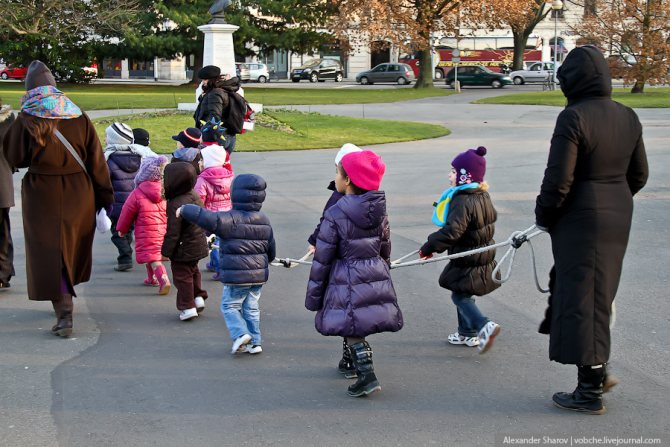
Play as a context of development in preschool age
“All the games are for you” - this is what adults will say when forcing their child to learn something new. However, not everyone knows that preschoolers and primary schoolchildren best remember information and develop their skills through play. Why is play so important for the development and education of preschool children?
• Play develops all children's cognitive processes.
• The game completely simulates the situation of a real society. It is in the gameplay that situations are created that are as close as possible to the real ones.
• Play is learning through fun. Here, knowledge is combined with education: children can learn material much better than learning “under pressure.”
• Thanks to the knowledge gained in the game, the child becomes familiar with the culture of the surrounding world.
• During the game, the child quickly assimilates social experience than would be the case during normal learning.
• Play helps develop the child’s will and thinking abilities. It is through the gameplay that he learns to overcome various difficulties.
• The game develops the child's thinking abilities. The gameplay requires solving incoming problems. At the same time, the preschooler must often use his imagination and not act only according to the model shown. This accelerates the child’s development in preschool education.
There are several types of games for preschoolers. Movable ones develop the child’s motor skills, role-playing ones help to understand the role in society. Board games help develop intelligence. Business games teach the basics of a certain profession, while didactic games allow you to better understand the world of adults.
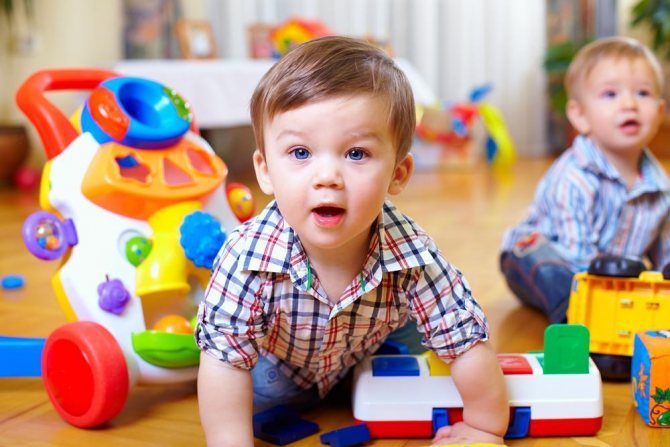
Photo source: https://www.shutterstock.com/
Preschool education as a concept of modern preschool pedagogy
Let’s begin our consideration of the concept of preschool education with the definition of “education.”
Definition 1
Education as the organization of a purposeful pedagogical process and stimulation of an active personality aimed at mastering the totality of social experience.
Definition 2
Preschool education is the process of forming the personality of a child from 0 to 7 years old in a preschool educational organization or family.
Preschool education in modern conditions is built in accordance with the requirements of the Federal State Educational Standard for Preschool Education; The domestic preschool education system is distinguished by:
- dynamism;
- variability of forms of organization of the educational process;
- flexibility in responding to public demands;
- variety of teaching services provided.
Structure and options for story-based play for preschoolers
The main preschool education programs for children offer various options for story-based games. Therefore, many parents ask a completely understandable and logical question: is it possible to play them at home, and not just in kindergarten? Answer: yes, you can. You just need to know the structure of the gameplay and the most common plots.
Types of plots
- A game in which there is only one character and one action in a certain situation.
- A game in which there are several heroes performing repeated actions.
- A game in which there are two characters that complement each other perfectly.
- A game in which there is not only the cooperation of the efforts of the characters, but also the relationships between them.
Game content
For the proper education of preschool children, you need to know that at the center of any game is the child, whose role is the dominant one. During the game, the child interacts with adults, objects, as well as his partners. In this case, the main driving mechanism of the game process is motive.
It is equally important to correctly determine the content of the game, as well as build its structure. This can be either a chain of interaction or various events organized by adult participants.
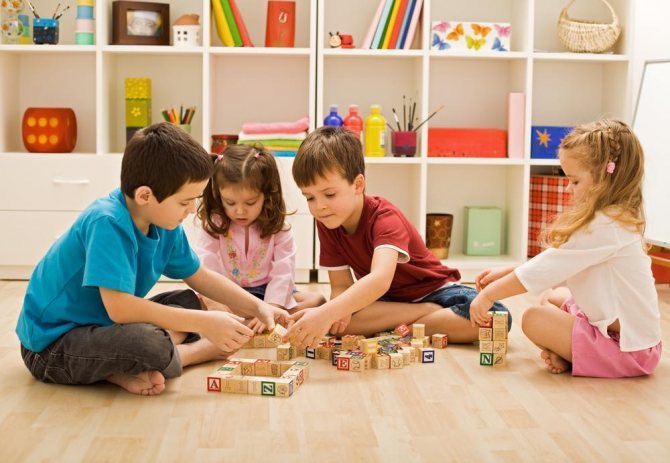
Photo source: https://www.shutterstock.com/
Computer games in the life of a preschooler
To play or not to play – that is the question for many parents. More precisely, whether to allow your child to play or not. After all, some educational programs for preschool education of children include the use of computer games.
Computer games - pros and cons
First, you should figure out why you should still allow your child to play on the computer.
- Colorful computer images allow you to better perceive the colors and shapes of objects.
- Logic games, of which there are many on specialized websites, can improve children's thinking. Such projects also improve intelligence, train logic and attention.
- Computer games, like regular games, allow the child to make decisions independently and coordinate their actions.
However, there are some arguments against computer games.
- The child is detached from reality because he is just pressing buttons.
- A preschooler may develop a gaming addiction and, as a result, problems with parents and problems in contacting other people.
- With prolonged involvement in games, the psychophysiological development of the senses does not occur correctly. For example, when you are oversaturated with bright images, the hearing sphere suffers significantly
Bottom line
It will not be possible to completely disown the use of a computer in a child’s development during preschool education. Games should still be used to improve the child’s development, but this should be done carefully and carefully, and also monitor play time.

Photo source: https://www.shutterstock.com/
